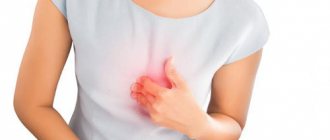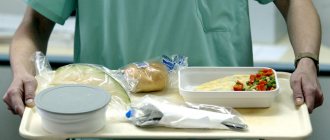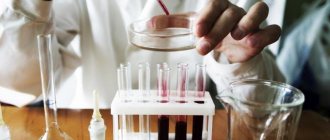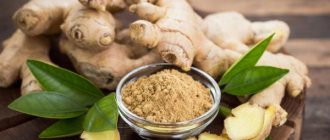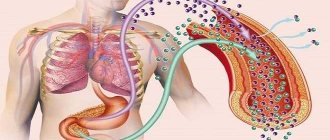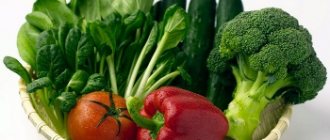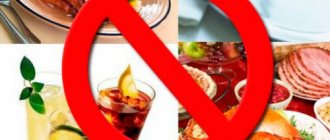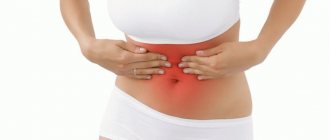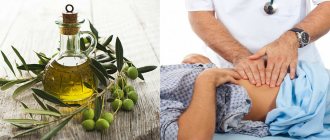General rules
Removal of the pancreas ( pancreatectomy ) is performed in the presence of severe life-threatening pathology when conservative treatment methods are ineffective. Indications for pancreatectomy are: acute inflammation with pancreatic necrosis , pancreatic injuries with bleeding, abscesses, cysts/pseudocysts, necrotizing pancreatitis with suppuration, large stones in the gland ducts, malignant tumors.
There are several types of operations on the pancreas (PG): removal of part of the organ (resection) - removal of the head of the pancreas (pancreaticoduodenectomy), removal of the tail/body (distal resection), complete removal of the gland (total pancreatectomy) and necrectomy (removal of dead tissue).
Since the pancreas is the most important secretory organ in the body, the enzymes of which ensure digestion, its complete/partial resection is a risk factor for the development of its functional failure.
Nutrition after removal of the pancreas, along with replacement therapy for the endo/exogenous function of the pancreas, is the most important and integral component of the postoperative period and the entire period of rehabilitation of the patient. metabolic disorders and is the basis for the qualitative/quantitative provision of the patient’s body with energy/plastic needs.
The diet after removal of the pancreas in the postoperative period is based on sequentially prescribed surgical treatment Tables No. 0A , 0B , 0B . At the same time, the diet of Diet No. 0A after operations on the pancreas is prescribed for 5-7 days, and not 2-3 days, as for surgical interventions on other organs. This is due to the need to combine parenteral and natural nutrition, since after pancreatic surgery, patients must receive a quantitatively/qualitatively adequate diet, which is caused by an increase in the need for food nutrients in relation to the physiological norm.
Ignoring this principle significantly increases the risk of developing postoperative complications and inadequate regeneration processes. It has been reliably established that the outcome/effectiveness of surgical intervention directly depends on the duration of artificial nutrition, energy value and adequacy of the composition of the nutritional supply. Therefore, the minimum period for a patient to remain on total parenteral nutrition should be at least 5-7 days, and for those who have undergone total pancreatectomy, at least 10-12 days.
The combination of a gradually increasing volume of enteral/natural nutrition with a gradual decrease in parenteral nutrition is the main requirement for therapeutic nutrition in the conditions of postoperative adaptation of the gastrointestinal tract to the absence of the pancreas. This approach makes it possible to maintain the protein-energy supply of the patient’s body at the level of the physiological norm during this period of early rehabilitation and to carry out a smoothly increasing nutritional load due to surgical hypocaloric diets that spare the gastrointestinal tract. The transition from total parenteral to nutrition using the gastrointestinal tract is carried out by prescribing surgical diets, and later - a pureed version of Diet No. 5p .
The total duration of all surgical diets can be 3-4 weeks, which is due to the need for the slowest possible nutritional load after pancreatic surgery. Questions about expanding the diet/food set, the duration of stay on a particular treatment table, the requirements for prescribed diets in the postoperative period should be resolved individually based on an assessment of the patient’s nutritional state, the general condition of the body and the characteristics of recovery processes.
At the stage of outpatient rehabilitation of patients in uncomplicated cases after pancreatic surgery, the diet of the medical table No. 5p , the pureed version of which is prescribed for a period of 1.5-2 months, and then for 6-12 months the patient is on the non-mashed version of this table.
The length of stay on each of them may vary depending on the course of the recovery processes. During the normal course of the rehabilitation process, the diet is gradually expanded by including new products and increasing the volume of their consumption. In the absence of diarrhea, the diet is supplemented with raw, finely chopped vegetables, mainly carrots/cabbage, taken 3-4 times a day at the beginning of meals, 100/150 g.
In cases of development of secretory/incretory insufficiency of the pancreas, symptoms of pancreatogenic enteropathy , manifested by diarrhea , steatorrhea , malabsorption and the development of protein-energy deficiency. For this category of patients, the protein content in the diet is increased to 120-130 g by increasing the consumption of lean meat (rabbit, chicken, veal), lean fish, dairy products, fish, egg whites and reducing the fat content to 60-70 g. Excluded foods rich in dietary fiber.
Products containing potassium salts (compotes from pureed dried fruits, juices) and calcium (calcified cottage cheese, vitamin and mineral complexes) are introduced into the diet.
It is recommended to practice the inclusion of specialized products in the diet - modular enteral protein mixtures from veal, beef, chicken meat, homogenized/puree canned food for baby/diet food. In some cases, after pancreatic surgery in patients, the passage of contents through the intestines is disrupted, which contributes to the development of constipation and dysbiosis. In such cases, the proportion of vegetables and unsweetened fruits in the diet increases, but at the same time, the content of easily digestible carbohydrates decreases, which avoids increased fermentation and flatulence .
In case of impaired glucose tolerance/signs of diabetes , diet therapy is adjusted taking into account impaired carbohydrate metabolism. Easily digestible carbohydrates are excluded/substantially limited in the diet, and the content of complex carbohydrates is at the level of 200-250 g, while sources of carbohydrates are distributed evenly among meals, coinciding with the time of taking antidiabetic drugs.
Therapeutic nutrition in postoperative patients with progressive exocrine insufficiency requires particularly clear individualization, determined by the nutritional form of pancreatic insufficiency, which can manifest itself in intolerance to proteins, fats and carbohydrates. At the same time, it is necessary to clarify the quantitative/qualitative side of such disorders: what products/in what quantity and combination the patient cannot tolerate. Accordingly, it is necessary to include in the diet foods that are well tolerated by the patient, taking into account the physiological norms of providing BZH and energy needs.
All patients who have undergone resection/complete removal of the pancreas to one degree or another require constant enzyme replacement therapy, as well as control/correction of glycemia . The volume and drugs of replacement therapy (taking digestive enzymes), and, if necessary, the administration of insulin , are determined by the doctor on an individual basis.
Life after surgery
Many people wonder if they will be able to live as actively as they did before after surgery. Will they turn into life-long sick people who constantly need to visit medical institutions? Life practice shows that most people who have undergone surgery have returned to their previous lives and previous activities.
It is important to note that all these patients strictly followed the doctor's instructions, followed the diet and took all prescribed medications. None of them engaged in independent treatment or adjustment of the prescribed diet. If you make an unauthorized decision regarding your health, you cannot guarantee complete healing and a return to an active, normal life.
Another concern that people have after surgery is how long they will survive after surgery. It is worth noting that carrying out such an operation is not a death sentence. How long you live depends only on you and your lifestyle. If you want to live a long life, you should follow all the instructions of your doctor.
We also recommend viewing: Reactive pancreatitis in children: symptoms and treatment
Authorized Products
The diet after pancreas removal includes:
- Soups prepared exclusively in vegetable broths with thoroughly boiled and grated vegetables/well-cooked cereals (semolina, oatmeal, rice). It is allowed to season soups with butter/vegetable oil, sour cream, dried flour, and cream.
- Vegetables (potatoes, zucchini, pumpkin, carrots, cauliflower, beets, green peas) boiled/mashed. Later, if well tolerated, you can eat raw grated pumpkin, carrots, cucumbers and tomatoes.
- Lean varieties of red meat (beef, veal), meat, rabbit, chicken, boiled/steamed turkey, chopped products (meatballs, cutlets, soufflé, dumplings, meatballs). Boiled chicken/rabbit meat can be eaten in pieces.
- Cereals (buckwheat, oatmeal, rice, semolina and oat flakes), cooked in water and ground to a viscous consistency.
- Low-fat steamed/boiled fish in the form of cutlets and pieces (cod, pollock, perch, pike, blue whiting, pike perch, hake, carp). Cook the fish in portions/whole carcasses. Poached fish is not allowed, as it contains many extractive substances.
- Stale wheat bread (grades I and II), unhealthy cookies
- Low-fat fermented milk products: curdled milk, kefir, acidophilus, semi-fat cottage cheese in puddings, casseroles, soufflés or in its natural form, grated mild cheese.
- Soft-boiled eggs/steam protein omelettes (1 piece per day).
- Sauces based on vegetable/mucus decoction of cereals with the addition of sour cream. Flour.
- Ripe sweet baked apples.
- Fats, first butter, which is added to porridge/puree in the amount of 15-20 g per day, then refined sunflower oil (5-15 g).
- Fruits/berries in the form of jelly, jam, jelly and mousse. Dried fruits - pureed, jelly marmalade, pasti, raw fruits/berries in pureed form.
- Drinks include rosehip infusion, fruit juices diluted with water, weak tea with lemon, still table water, compotes of fresh and dried fruits.
Table of permitted products
| Proteins, g | Fats, g | Carbohydrates, g | Calories, kcal | |
Vegetables and greens | ||||
| zucchini | 0,6 | 0,3 | 4,6 | 24 |
| broccoli | 3,0 | 0,4 | 5,2 | 28 |
| cauliflower | 2,5 | 0,3 | 5,4 | 30 |
| potato | 2,0 | 0,4 | 18,1 | 80 |
| carrot | 1,3 | 0,1 | 6,9 | 32 |
| cucumbers | 0,8 | 0,1 | 2,8 | 15 |
| tomatoes | 0,6 | 0,2 | 4,2 | 20 |
| pumpkin | 1,3 | 0,3 | 7,7 | 28 |
Fruits | ||||
| apples | 0,4 | 0,4 | 9,8 | 47 |
Nuts and dried fruits | ||||
| dried apricots | 5,2 | 0,3 | 51,0 | 215 |
| dried apricots | 5,0 | 0,4 | 50,6 | 213 |
| prunes | 2,3 | 0,7 | 57,5 | 231 |
Cereals and porridges | ||||
| buckwheat (kernel) | 12,6 | 3,3 | 62,1 | 313 |
| semolina | 10,3 | 1,0 | 73,3 | 328 |
| oat groats | 12,3 | 6,1 | 59,5 | 342 |
| rice | 6,7 | 0,7 | 78,9 | 344 |
Bakery products | ||||
| wheat bread | 8,1 | 1,0 | 48,8 | 242 |
Confectionery | ||||
| jam | 0,3 | 0,2 | 63,0 | 263 |
| jelly | 2,7 | 0,0 | 17,9 | 79 |
| marshmallows | 0,8 | 0,0 | 78,5 | 304 |
| fruit and berry marmalade | 0,4 | 0,0 | 76,6 | 293 |
| paste | 0,5 | 0,0 | 80,8 | 310 |
| Maria cookies | 8,7 | 8,8 | 70,9 | 400 |
Raw materials and seasonings | ||||
| honey | 0,8 | 0,0 | 81,5 | 329 |
| sugar | 0,0 | 0,0 | 99,7 | 398 |
Dairy | ||||
| kefir 1.5% | 3,3 | 1,5 | 3,6 | 41 |
| curdled milk 1% | 3,0 | 1,0 | 4,1 | 40 |
| acidophilus 1% | 3,0 | 1,0 | 4,0 | 40 |
Cheeses and cottage cheese | ||||
| cottage cheese 1% | 16,3 | 1,0 | 1,3 | 79 |
| cottage cheese 1.8% (low-fat) | 18,0 | 1,8 | 3,3 | 101 |
Meat products | ||||
| beef | 18,9 | 19,4 | 0,0 | 187 |
| rabbit | 21,0 | 8,0 | 0,0 | 156 |
Bird | ||||
| boiled chicken breast | 29,8 | 1,8 | 0,5 | 137 |
| boiled turkey fillet | 25,0 | 1,0 | — | 130 |
Eggs | ||||
| chicken eggs | 12,7 | 10,9 | 0,7 | 157 |
Fish and seafood | ||||
| flounder | 16,5 | 1,8 | 0,0 | 83 |
| pollock | 15,9 | 0,9 | 0,0 | 72 |
| blue whiting | 16,1 | 0,9 | — | 72 |
| cod | 17,7 | 0,7 | — | 78 |
| hake | 16,6 | 2,2 | 0,0 | 86 |
| pike | 18,4 | 0,8 | — | 82 |
Oils and fats | ||||
| butter | 0,5 | 82,5 | 0,8 | 748 |
| sunflower oil | 0,0 | 99,9 | 0,0 | 899 |
Non-alcoholic drinks | ||||
| water | 0,0 | 0,0 | 0,0 | — |
| mineral water | 0,0 | 0,0 | 0,0 | — |
Juices and compotes | ||||
| apricot juice | 0,9 | 0,1 | 9,0 | 38 |
| carrot juice | 1,1 | 0,1 | 6,4 | 28 |
| peach juice | 0,9 | 0,1 | 9,5 | 40 |
| pumpkin juice | 0,0 | 0,0 | 9,0 | 38 |
| rose hip juice | 0,1 | 0,0 | 17,6 | 70 |
| * data is per 100 g of product | ||||
Diet for pancreatic cancer
Patients are prescribed table No. 5p. It is characterized by the following parameters:
- The calorie content of the diet does not exceed 1800 kcal;
- Carbohydrate content – up to 200 g;
- The amount of protein is 100-120 g, fat 80 g per day.
The diet is based on limiting extractive substances of plant and animal origin, which stimulate the pancreas. Nutritionists do not recommend foods with seasonings, foods rich in fiber, fatty fried foods, and foods that are high in fat.
If a patient suffering from pancreatic cancer has severe intestinal disorders, he is prescribed table No. 4 according to Pevzner. The calorie content of the diet is 1600 kcal. The patient receives 120 g of protein, 100 g of fat, and 200 g of carbohydrates per day. The menu includes the following dishes:
- Fish and meat soufflé;
- Low-fat cottage cheese;
- Weak tea;
- Bird cherry compote;
- Blueberry jelly;
- White steamed scrambled eggs or omelet, or soft-boiled egg.
The patient can eat decoctions of rice and buckwheat, meat and fish low-fat broths. Meals for stage 3 pancreatic cancer should be divided, 5-6 times a day, in small portions. All products are boiled, grilled or steamed.
A sample menu looks like this:
- Breakfast – fish soufflé, steamed egg white omelette;
- Second breakfast – low-fat cottage cheese;
- Lunch – pureed meat soup in low-fat broth, steamed minced meat;
- Afternoon snack – a glass of blueberry jelly or bird cherry infusion;
- Dinner – boiled meat (beef, chicken fillet), tea.
Products made from white flour are excluded from the diet of patients with pancreatic cancer. Patients are given gluten-free crackers. Strong meat broths, fatty meat and fish, fatty cheese and cottage cheese, various snacks, and seasonings are excluded from the diet. Patients are not recommended to consume milk, kefir, fermented baked milk, or add sour cream to dishes. The consumption of pasta, pasta casseroles, dumplings, pizza, pies and other baked goods is especially strictly limited. All soy-based meat substitutes are excluded. In order to improve the organoleptic properties of dishes, the cooks at the Yusupov Hospital decorate them with aromatic herbs.
Fully or partially limited products
Dietary nutrition after removal of the pancreas includes exclusion from the diet:
- Soups with broths made from meat, fish and mushrooms.
- Fresh (today's) wheat, grain and rye bread, muffins, yeast pies, puff pastry, cakes, pastries with cream.
- Any fried foods: fried pies, pancakes, potatoes, meat, fish, cheesecakes, pancakes.
- Fatty varieties of red meat/fish (sturgeon, salmon, halibut), poultry meat (goose and duck), canned food, smoked meats, caviar, salted fish, sausages, offal (kidneys, liver, brains).
- Some types of cereal products (corn, pearl barley, barley, millet cereals).
- Vegetables containing coarse fiber (radish, rutabaga, turnip, eggplant, white cabbage), mushrooms in any form, legumes. Raw vegetables are introduced gradually and very carefully. At the initial stage, they are consumed exclusively in boiled/baked form.
- Cooking/animal fats (lamb, pork, beef).
- Fruits high in simple carbohydrates (bananas, grapes, dates), which cause bloating.
- Chicken eggs, hard-boiled/fried.
- Fatty dairy/fermented milk products (cream, whole milk, full-fat cottage cheese, salty, spicy cheese).
- Hot/spicy seasonings and spices: mustard, pepper, horseradish, herbs, mayonnaise, ketchup.
- Chocolate, black and green strong tea, grape juice, ice cream, jam, honey, carbonated/alcoholic drinks, cocoa.
Table of prohibited products
| Proteins, g | Fats, g | Carbohydrates, g | Calories, kcal | |
Vegetables and greens | ||||
| canned vegetables | 1,5 | 0,2 | 5,5 | 30 |
| eggplant | 1,2 | 0,1 | 4,5 | 24 |
| swede | 1,2 | 0,1 | 7,7 | 37 |
| peas | 6,0 | 0,0 | 9,0 | 60 |
| cabbage | 1,8 | 0,1 | 4,7 | 27 |
| bulb onions | 1,4 | 0,0 | 10,4 | 41 |
| chickpeas | 19,0 | 6,0 | 61,0 | 364 |
| salad pepper | 1,3 | 0,0 | 5,3 | 27 |
| parsley | 3,7 | 0,4 | 7,6 | 47 |
| radish | 1,2 | 0,1 | 3,4 | 19 |
| white radish | 1,4 | 0,0 | 4,1 | 21 |
| dill | 2,5 | 0,5 | 6,3 | 38 |
| beans | 7,8 | 0,5 | 21,5 | 123 |
| horseradish | 3,2 | 0,4 | 10,5 | 56 |
| spinach | 2,9 | 0,3 | 2,0 | 22 |
| sorrel | 1,5 | 0,3 | 2,9 | 19 |
Fruits | ||||
| bananas | 1,5 | 0,2 | 21,8 | 95 |
Berries | ||||
| grape | 0,6 | 0,2 | 16,8 | 65 |
Mushrooms | ||||
| mushrooms | 3,5 | 2,0 | 2,5 | 30 |
| marinated mushrooms | 2,2 | 0,4 | 0,0 | 20 |
Nuts and dried fruits | ||||
| nuts | 15,0 | 40,0 | 20,0 | 500 |
| raisin | 2,9 | 0,6 | 66,0 | 264 |
| seeds | 22,6 | 49,4 | 4,1 | 567 |
| dates | 2,5 | 0,5 | 69,2 | 274 |
Cereals and porridges | ||||
| corn grits | 8,3 | 1,2 | 75,0 | 337 |
| millet cereal | 11,5 | 3,3 | 69,3 | 348 |
| barley grits | 10,4 | 1,3 | 66,3 | 324 |
Flour and pasta | ||||
| pasta | 10,4 | 1,1 | 69,7 | 337 |
| dumplings | 11,9 | 12,4 | 29,0 | 275 |
Bakery products | ||||
| buns | 7,9 | 9,4 | 55,5 | 339 |
| Rye bread | 6,6 | 1,2 | 34,2 | 165 |
Confectionery | ||||
| pastry cream | 0,2 | 26,0 | 16,5 | 300 |
| shortbread dough | 6,5 | 21,6 | 49,9 | 403 |
Ice cream | ||||
| ice cream | 3,7 | 6,9 | 22,1 | 189 |
Chocolate | ||||
| chocolate | 5,4 | 35,3 | 56,5 | 544 |
Raw materials and seasonings | ||||
| mustard | 5,7 | 6,4 | 22,0 | 162 |
| mayonnaise | 2,4 | 67,0 | 3,9 | 627 |
Dairy | ||||
| milk 4.5% | 3,1 | 4,5 | 4,7 | 72 |
| cream 35% (fat) | 2,5 | 35,0 | 3,0 | 337 |
| whipped cream | 3,2 | 22,2 | 12,5 | 257 |
| sour cream 30% | 2,4 | 30,0 | 3,1 | 294 |
Cheeses and cottage cheese | ||||
| parmesan cheese | 33,0 | 28,0 | 0,0 | 392 |
Meat products | ||||
| fatty pork | 11,4 | 49,3 | 0,0 | 489 |
| salo | 2,4 | 89,0 | 0,0 | 797 |
| bacon | 23,0 | 45,0 | 0,0 | 500 |
Sausages | ||||
| smoked sausage | 9,9 | 63,2 | 0,3 | 608 |
Bird | ||||
| smoked chicken | 27,5 | 8,2 | 0,0 | 184 |
| duck | 16,5 | 61,2 | 0,0 | 346 |
| smoked duck | 19,0 | 28,4 | 0,0 | 337 |
| goose | 16,1 | 33,3 | 0,0 | 364 |
Fish and seafood | ||||
| smoked fish | 26,8 | 9,9 | 0,0 | 196 |
| black caviar | 28,0 | 9,7 | 0,0 | 203 |
| salmon caviar granular | 32,0 | 15,0 | 0,0 | 263 |
| salmon | 19,8 | 6,3 | 0,0 | 142 |
| canned fish | 17,5 | 2,0 | 0,0 | 88 |
| salmon | 21,6 | 6,0 | — | 140 |
| trout | 19,2 | 2,1 | — | 97 |
Oils and fats | ||||
| animal fat | 0,0 | 99,7 | 0,0 | 897 |
| cooking fat | 0,0 | 99,7 | 0,0 | 897 |
Alcoholic drinks | ||||
| dry red wine | 0,2 | 0,0 | 0,3 | 68 |
| vodka | 0,0 | 0,0 | 0,1 | 235 |
| beer | 0,3 | 0,0 | 4,6 | 42 |
Non-alcoholic drinks | ||||
| soda water | 0,0 | 0,0 | 0,0 | — |
| cola | 0,0 | 0,0 | 10,4 | 42 |
| instant coffee dry | 15,0 | 3,5 | 0,0 | 94 |
| sprite | 0,1 | 0,0 | 7,0 | 29 |
Juices and compotes | ||||
| grape juice | 0,3 | 0,0 | 14,0 | 54 |
| * data is per 100 g of product | ||||
Menu (Power Mode)
The nutrition menu after removal of the pancreas is based on the list of permitted foods on the prescribed diet. The range of products in the food menu varies significantly: from an extremely narrow one in surgical diets in the postoperative period to a wide list of dietary products of unprocessed Table 5p , which is physiologically complete nutrition. But at any stage, therapeutic nutrition must be selective and observed for a long period/lifelong. At the same time, gross dietary violations are extremely undesirable.
general information
Doctors call the pancreas a delicate and unpredictable organ. During surgery, she often “demonstrates” unexpected behavior. The operations are complex.
There is a fairly high mortality rate. Survival prognosis depends on the age and health of the person. It will take a long time before complete recovery. Removing any part of the pancreas is called pancreatectomy.
The operation may affect:
- small intestine;
- lymph nodes;
- stomach;
- gallbladder;
- spleen
Reviews and results
Therapeutic nutrition after removal of the pancreas requires careful adherence and avoidance of gross dietary violations. According to the reviews of the overwhelming number of patients, adherence to therapeutic nutrition makes it possible to provide the body with all food nutrients and maintain gastrointestinal tract functions in a satisfactory state. Negative reviews emphasize the need to follow a diet for life and adapt to individual nutrition.
- “... Delivered to the hospital by ambulance, diagnosis: hemorrhagic sterile widespread pancreatic necrosis, pancreatogenic peritonitis. They operated on him immediately. The operation was difficult, I was in intensive care for almost a week, then I was transferred to the department. During this entire period I did not eat on my own. Solutions and drugs were injected directly into a vein, and then transferred to special nutritional mixtures. Now I have started to eat on my own, but little by little, the diet is very strict. Relatives were told that they needed to buy a steamer and learn how to cook diet dishes, since they would have to be on a diet for the rest of their lives”;
- “... I am 45 years old, three years ago a part (body and tail) of the pancreas was removed. I spent almost 4 months in the hospital until all the drains were removed. Now at home, disability group II, on a strict diet, no stress. The threat of diabetes still remains. I take all the enzymes prescribed to me. I independently studied all the principles of nutrition during pancreatic resection, diet options, allowed/prohibited foods. I bought a nutritionist’s reference book and studied the specifics of preparing dietary dishes, as well as a high-quality steamer, because I understand that a strict diet and enzyme replacement therapy are my destiny for the rest of my life”;
